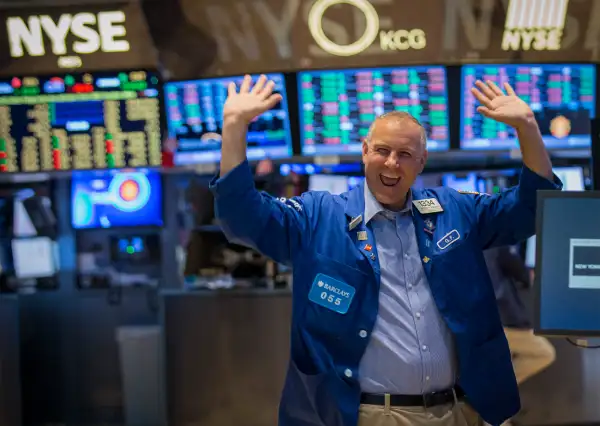Forget Dow 17,000. Here's the Real Number to Get Excited About
Money is not a client of any investment adviser featured on this page. The information provided on this page is for educational purposes only and is not intended as investment advice. Money does not offer advisory services.

At the market's open today, a few more zeros turned over on the Dow's odometer, and the index is likely to be bouncing around 17,000 all day. Sure, the number itself doesn't matter much—it's not like you get a bonus added to your retirement every time you hit a round figure. But it is a chance to pause and look at just how far the market has come in this bull market, and what that might mean about where it's going. It's also a moment to look at some other milestones that may be coming up soon. (Spoiler: Keep your eye on the Nasdaq.
Dow 17,000
In some ways what’s notable about the Dow reaching 17,000 isn’t that it’s gained a such a lofty height, but that it could be stalled here for some time. The Dow closed above14,000 in February 2013, and hit 14,253 a few weeks later in March. While not a round number, the latter milestone was important because it represented a new all time high. The previous one, hit in October 2007, had stood as a reminder of the myopia on the eve of the financial crisis. In any case, since then, milestones have tumbled quickly. The index hit 15,000 by May 2013 and 16,000 by November. After such a rapid run up, the Dow took almost eight months to reach the next round-number close, 17,000 on July 3, where it’s now again hovering. Given that some of our brightest minds are puzzling over why stocks have come thus far, and whether their current prices relative to earnings are justified, perhaps we'll see16,000 again before we see 18,000.
S&P 500 2,000
When the Dow hit 17,000 earlier this year, it seemed like the S&P 500 would follow with a milestone of its own, hitting 2,000 for the first time. As it turned out the S&P topped out at 1,987 on July 23. In some ways, the S&P's thriple-zero achievement would be more historic. After all, the S&P will have doubled to get to 2,000 from 1,000, which it first hit in February 1998. The Dow’s latest milestone represents a gain of only about 6%.
And of course the S&P is a better stock market gauge than the Dow. The Dow, founded in 1896, represents just 30 of the nation’s largest companies. The S&P, which has existed in its current form since the '50s, covers 500. It also weights companies based on their relative values, as opposed to the Dow, which relies on stock prices – an arbitrary distinction that happened to be convenient for nineteenth-century stock nerds. More important, people actually own the S&P 500, in the form index mutual funds and ETFs which track the index. So why do we still pay attention to the Dow? Just because we always have. When you’re talking about milestones, history counts…
Nasdaq Composite 5048
The tech-heavy Nasdaq recently closed at 4,500. If there’s one milestone worth caring about, it could be when (if?!) this index reaches 5,000, or more precisely 5,048.62. That was its all-time high, hit in March 2000. From there the Nasdaq fell steeply – declining to just above 1,100 in 2002. So it’s been a pretty steep march back, for which you can thank juggernauts like Google , which has returned more than 1,000% since its August 2004 initial public offering and Apple which has returned 4,500% over the same span. Of course, there are those who think we may be in the early stages of another tech bubble—even Fed chair Janet Yellen has raised an eyebrow over pricey social networking and biotech stocks. That said, those of us who can remember the euphoria of 1999 probably feel like investors are a little more wise this time around. Let’s hope so. The track record of more recent IPOs like coupon company Groupon and game producer Zynga , both trading at less than a third of their initial prices, suggest that investors can still muster some skepticism.
Apple $100
Earlier this week, Apple earned a wave of headlines when its shares hit $100, a record high, amid strong expectations for products like a larger iPhone and a possible smart watch. That's good news for CEO Tim Cook who must try to fill the shoes of legendary founder Steve Jobs. And Wall Street analysts seem to think it can climb higher, predicting it will reach $105 over next 18 months, although they are a famously bullish crowd. One thing is for certain, as far as milestones go, this one's pretty flimsy. While $100 has a nice ring to it, Apple's shares would be worth about $700 if the company hadn't undergone a 7 for 1 stock split in June.
